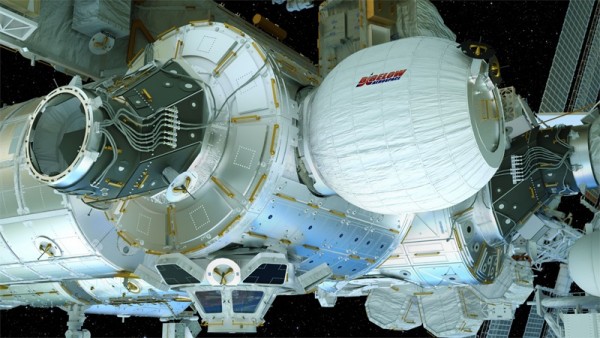By Ana Verayo, | March 29, 2016

The new BEAM inflatable space module will be attached to the ISS.
Astronauts who will be bound for Mars in the near future will be able to find themselves living in inflatable spaces soon that will become their temporary habitat before reaching the Red Planet.
NASA is now closely working with startup company, Bigelow Aerospace that is based in Nevada to develop new and practical ways to provide space explorers enough livable space in microgravity without the burden of carrying too much weight and cargo in their spacecraft.
Like Us on Facebook
This collaboration resulted in the new Bigelow Expandable Activity Module (BEAM) which is an expandable habitat technology that is expected to be efficient and easy to carry on spacecraft due to its payload requirement of only the most minimum weight.
This new inflatable space environment can protect its inhabitants from the various, harsh elements of space such as solar winds, cosmic radiations and ultraviolet rays. Even if this module is lightweight, it can also protect space explorers from flying space debris and atomic oxygen that can be dangerous to humans in deep space.
To date, NASA uses metal habitats aboard the International Space Station where the space agency hopes for the new BEAM technology to provide a more proper and feasible alternative that can allow to transport all the necessary cargo in space as opposed to launching parts of a habitat via numerous rocket launches that is undoubtedly more expensive.
These expandable modules consist of lower volume and mass which can allow NASA to keep expensive launch costs at bay, making cargo shipments more efficient and manageable. This new BEAM unit is scheduled to be launched during SpaceX's eighth commercial resupply mission to the orbiting space laboratory.
When this reaches the ISS, this module will be attached to the space station's Tranquility Node with the help of its robotic arm, Canadarm2, and then later filled with air to set up the entire module.
This BEAM module will be utilized by astronauts for a period of two years, to test its overall capabilities and performance for a potential living space in zero gravity. Scientists will track the module's performance in providing protection for humans from space radiation, space debris including micrometeoroids.
NASA mission scientists will also monitor BEAM's performance in the thermal environment of space, to find out if this is a viable and feasible option for future long term space missions. If BEAM is proven to be a success, NASA can bring this new technology as a suitable housing unit for the first human colony on Mars.
-
Use of Coronavirus Pandemic Drones Raises Privacy Concerns: Drones Spread Fear, Local Officials Say

-
Coronavirus Hampers The Delivery Of Lockheed Martin F-35 Stealth Fighters For 2020

-
Instagram Speeds Up Plans to Add Account Memorialization Feature Due to COVID-19 Deaths

-
NASA: Perseverance Plans to Bring 'Mars Rock' to Earth in 2031

-
600 Dead And 3,000 In The Hospital as Iranians Believed Drinking High-Concentrations of Alcohol Can Cure The Coronavirus

-
600 Dead And 3,000 In The Hospital as Iranians Believed Drinking High-Concentrations of Alcohol Can Cure The Coronavirus

-
COVID-19: Doctors, Nurses Use Virtual Reality to Learn New Skills in Treating Coronavirus Patients







